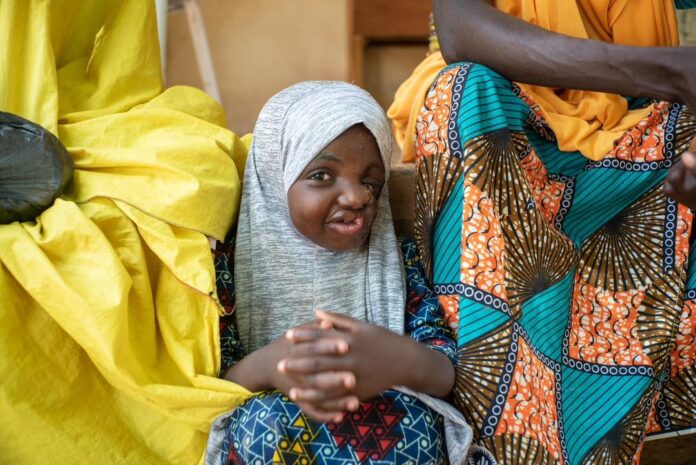The World Health Organization (WHO) has officially recognized Noma as a neglected tropical disease, shedding light on a devastating condition that has long plagued the most vulnerable populations.
Noma is a rapidly progressing severe gangrenous disease of the mouth and the face. Like other neglected tropical diseases, Noma impacts the most vulnerable and marginalized populations. It mostly affects children aged 2–6 years suffering from malnutrition, affected by infectious diseases, living in extreme poverty with poor oral health, or with weakened immune systems. The true distribution of the disease is unknown; however, cases of Noma are mostly found in sub-Saharan Africa, although cases have also been reported in the Americas and Asia.Without timely intervention, Noma can lead to death in up to 90% of cases.
The WHO on 15, December 27, 2023 officially recognized Noma as one of the neglected tropical diseases following a collective action for health by 32 countries, with the trail-blazing leadership of Nigeria and 14 other African countries (Benin, Botswana, Burkina Faso, Cabo Verde, Chad, Guinea Bissau, Kenya, Liberia, Mauritius, Mozambique, Namibia, Niger, Rwanda, and Senegal). This is a major milestone in the nomacontrol effort.
Prior to this recommendation, the Noma control effort in sub-Saharan Africa had recorded some progress. This included the development and implementation of the national Noma action plan, training of primary care and community health workers by leveraging the online training course for Noma towards primary care workers, integration of Noma into the existing surveillance system, and enhanced intercountry collaboration for patient referral, e.g., between Benin and Niger.
Despite the progress made, many challenges remain. These include lack of up-to-date epidemiological data, substantial knowledge gaps in the cause, and treatment efficacy, prevailing social stigma, and low levels of awareness of noma among healthcare workers and caretakers. There is also very limited attention paid to noma by national health authorities and development partners. All these hinder progress in nomaprevention and control.
WHO believes that the decision to recognize Noma as one of the neglected tropical disease will help boost efforts to end the devastating disease especially in the African region which bears the highest burden globally. By designating it as such, the global health community is compelled to prioritize resources and develop comprehensive strategies to combat Noma effectively.
The recognition of noma as a neglected tropical disease will contribute to accelerating an integrated approach to addressing noma in the region. This will include, but not be limited to, integrated active case surveillance of noma during the mass drug administration for other neglected tropical diseases, joint training, social mobilization, as well as leverage the existing other neglected tropical diseases wound management, referral, and support systems for noma treatment. It will also enhance the person-centred approach to health service delivery as well as cross-sectoral collaboration especially in mobilizing for health action, all actors beyond the health sector.
In addition to increasing political commitment, integration can lead to opportunities for activism, finance, research, and worldwide exposure. Together with eradicating extreme poverty and enhancing living conditions, historical experience from numerous nations where noma cases were previously seen demonstrates that noma control is achievable.
“Noma is a deeply devastating disease and a significant public health problem,” said Dr Matshidiso Moeti, the WHO Regional Director for Africa. “By recognizing the noma as a neglected tropical disease, we can capitalize on other ongoing disease control or elimination efforts, coordinate response and galvanize political support to end the disease. Moreover, we can build on the extant collective action of countries to foster a regional coalition against noma in Africa.”
In an effort to permanently lower the prevalence of Noma as a public health issue, the WHO Regional Office for Africa has spearheaded regional efforts to control the disease since 2001. This has been accomplished by offering focal points at the Ministry of Health regional strategic advice, tools, and capacity building. The goal of the Regional Noma Control Programmehas been to promote primary health care and integrate Nomaprevention and control activities into national health programs in order to achieve universal health coverage. The German voluntary group Hilfsaktion Noma e.V. has been funding eleven Noma-priority nations, mostly in Western Africa, since 2013 in order to assist them in developing and implementing national Noma-control programs.
Additionally, the WHO aims to collaborate with governments, non-governmental organizations, and local communities to raise awareness and mobilize resources for Noma prevention and treatment programs. While the battle against Noma is undoubtedly challenging, there have been success stories that provide hope for the future. In Niger, for instance, a comprehensive Noma control program has been implemented, leading to a significant reduction in the number of cases. This program focuses on early detection, timely treatment, and community engagement, demonstrating the effectiveness of a holistic approach.
The recognition of Noma as a neglected tropical disease by the WHO is a crucial step towards eradicating this devastating condition. By bringing Noma to the forefront of global health priorities, the international community can work together to save lives, prevent unnecessary suffering, and ensure a brighter future for the most vulnerable populations. It is a call to action that demands our attention and collective efforts to combat this silent epidemic.










